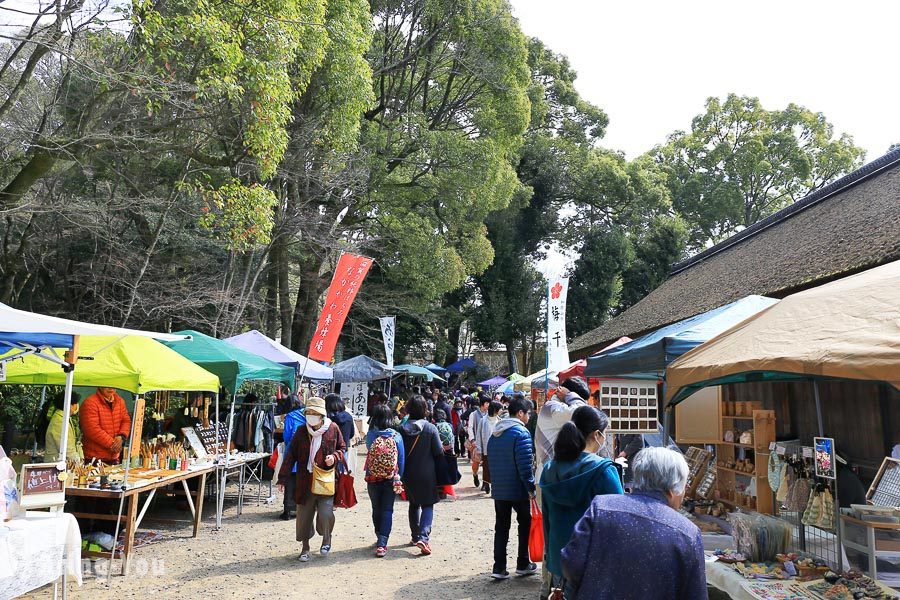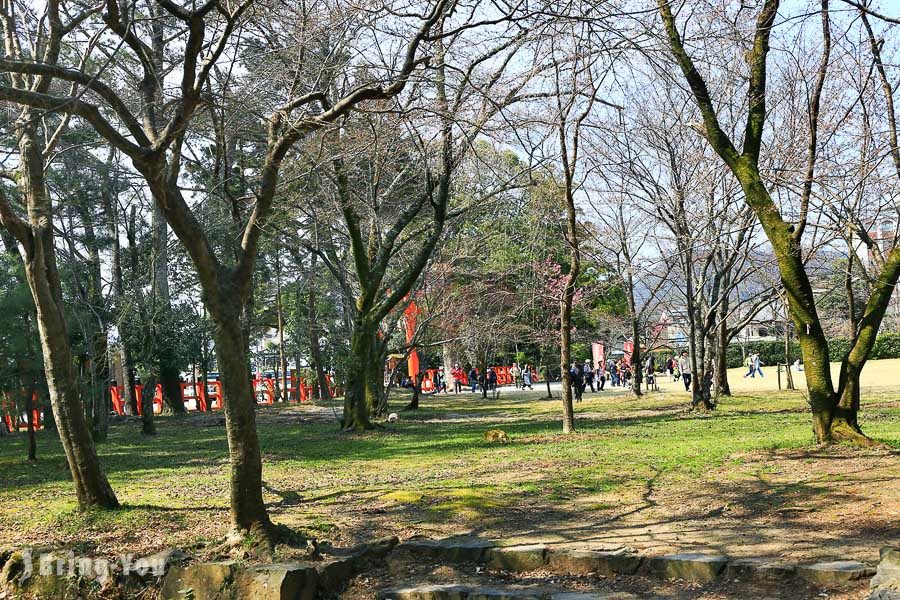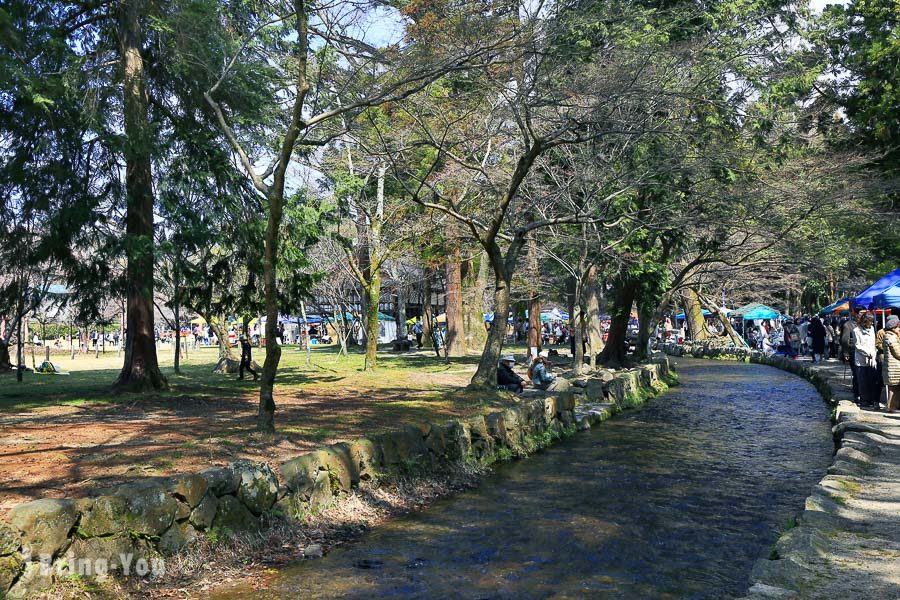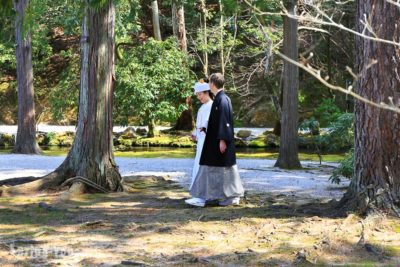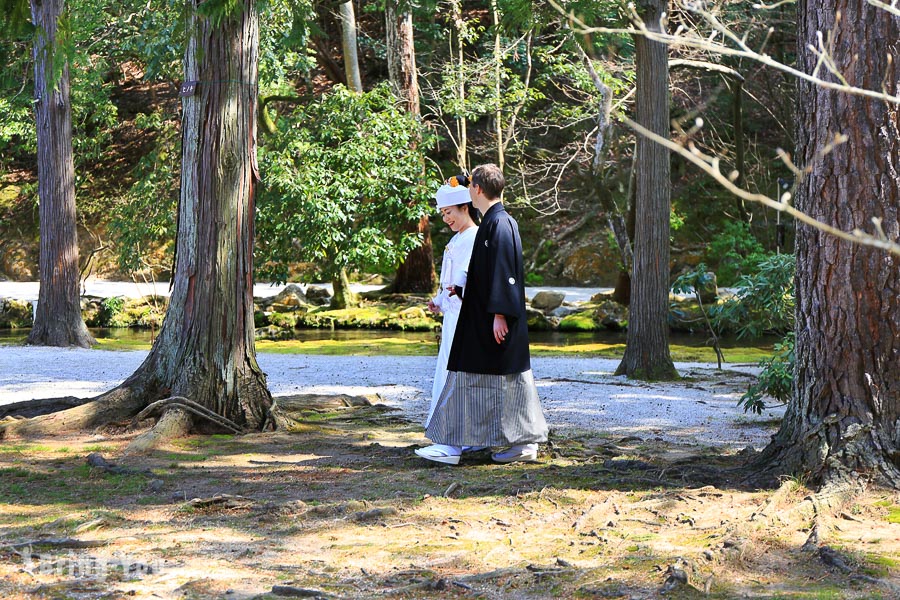The Most Energetic Shrine in Kyoto! Kamigamo Shrine
During the Japan trip, Piaor loves to visit handmade markets. This time, we happened to come across the Kamigamo Shrine handmade market held on the last Sunday of every month. It was a rare opportunity, so we specially arranged to visit the Kamigamo Shrine in Kyoto, which is second only to Ise Grand Shrine in status, on a morning.
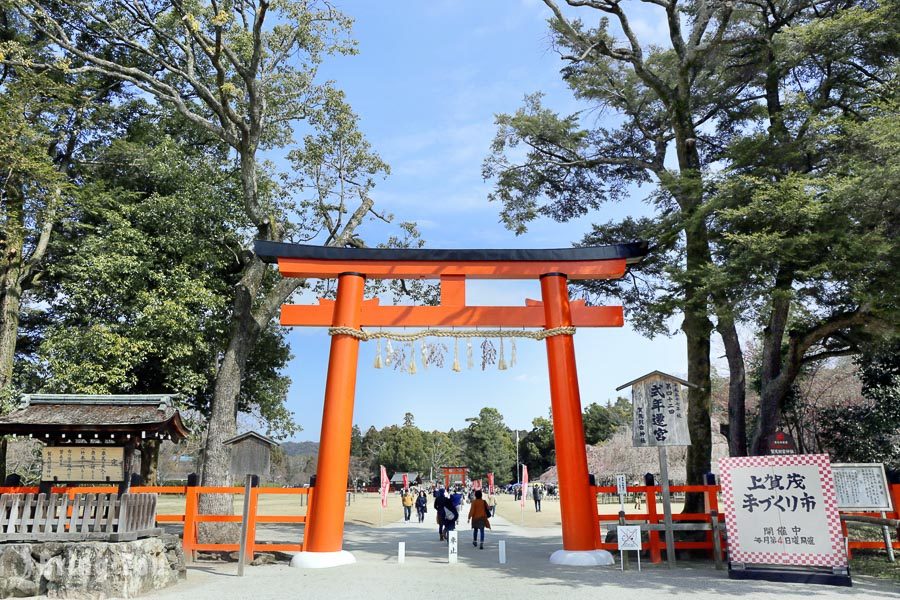
Introduction to Kamigamo Shrine
“Kamigamo Shrine” is the collective name for Kamigamo Bekkaijin Shrine and Kamigamo Misonu Shrine (also known as Shimogamo Shrine), both of which have been enshrining the Kamomioya, the ancestral god of the Kamomioya family, since ancient times. It is revered as the guardian deity and god of victory in the electronics industry.
One of the famous “Kyoto Three Festivals” in Japan, the “Aoi Festival”, is a major festival event of these two shrines. In addition, the main hall and the privilege hall are national treasures, and the architecture is also registered as a world cultural heritage. It is a popular energy spot for Kyoto travel. Here, I will share with you the visiting route of Kamigamo Shrine. Let’s feel the energy during the Aoi Festival next time!
Transportation to Kamigamo Shrine
- Address: 339 Kamigamo Motoyama, Kita-ku, Kyoto
- Opening hours: 5:30~17:00 (The gate and the café inside the building open later. Please refer to the official website for details.)
- Phone: 075-781-0011
The Kamigamo Shrine is located in the northern part of Kyoto city, and there is no subway that can reach it. You can take the city bus route 4 from Kyoto Municipal Subway “Kitayama Station” or “Shimogamo Shrine Mae”, “Demachiyanagi Station”, “Shijo Kawaramachi”, or “Kyoto Station” and get off at “Kamigamo Shrine Mae Station” to reach it.
Recommended Tourist Attractions in Kamigamo Shrine
As the Shimogamo Shrine is closer to the main tourist attractions in Kyoto than the Kamigamo Shrine, which is quite far away and takes half an hour by bus from Kyoto Station, I would recommend visiting the Shimogamo Shrine first and then continuing on to other nearby attractions by bus.
- 【Kyoto Shimogamo Shrine】Visit Aioi Shrine for Marriage, Kawai Shrine for Beauty, and Tadasu no Mori
- 【Kyoto Kamogawa Stroll】Jumping Turtles at Demachiyanagi Station and Beautiful Scenery of Kamogawa River
Shimogamo Shrine Attractions
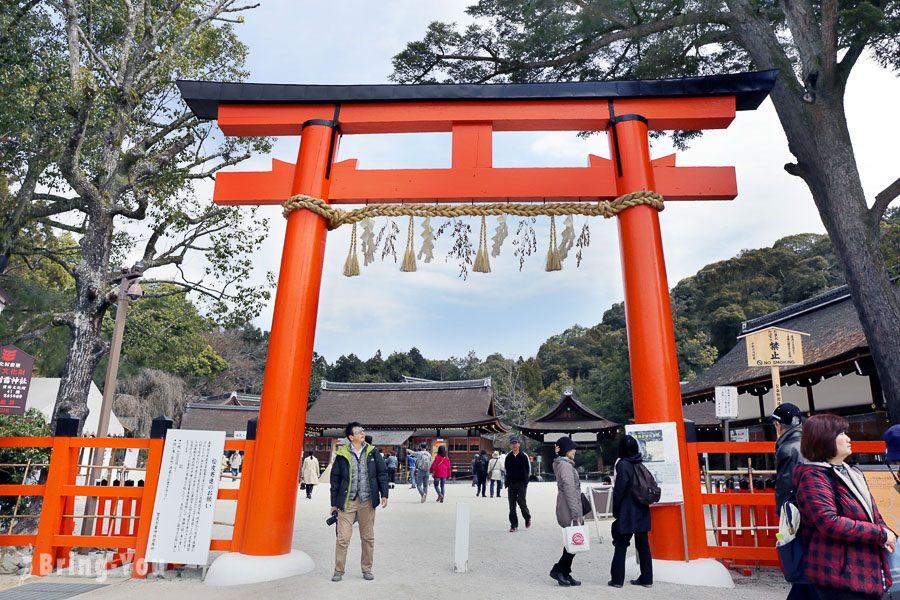
Kamigamo Shrine is one of the oldest and most prestigious shrines in Japan. The shrine is surrounded by mountains and forests, with streams, lawns, and small hills. The area is quite large, with a total of 6 main shrines and 9 sub-shrines. Here are some of the most classic attractions:
Shinensengu
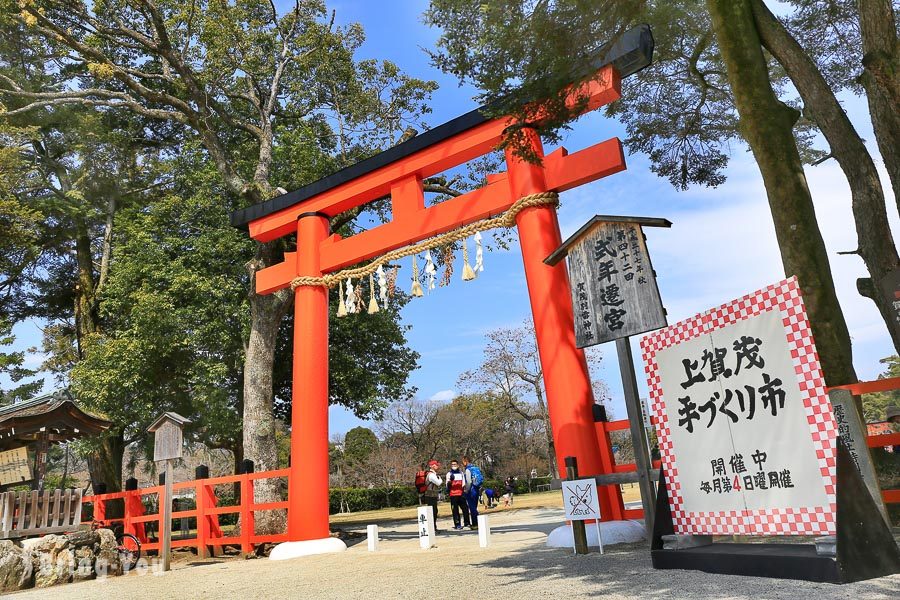
During my visit to Kamigamo Shrine, I was fortunate enough to witness the “Shikinen Sengu” ceremony. This ceremony involves periodic maintenance of the shrine, during which the deities residing in the main hall are temporarily relocated to the auxiliary hall. Once the main hall is repaired, the deities are invited back, completing the Sengu ceremony.
In front of the first torii gate of Kamigamo Shrine, there is a “Shinmado” established in 1872, where you can taste the local specialty of “yakimochi” with red bean paste filling, which is a must-try.
Shen Nong House
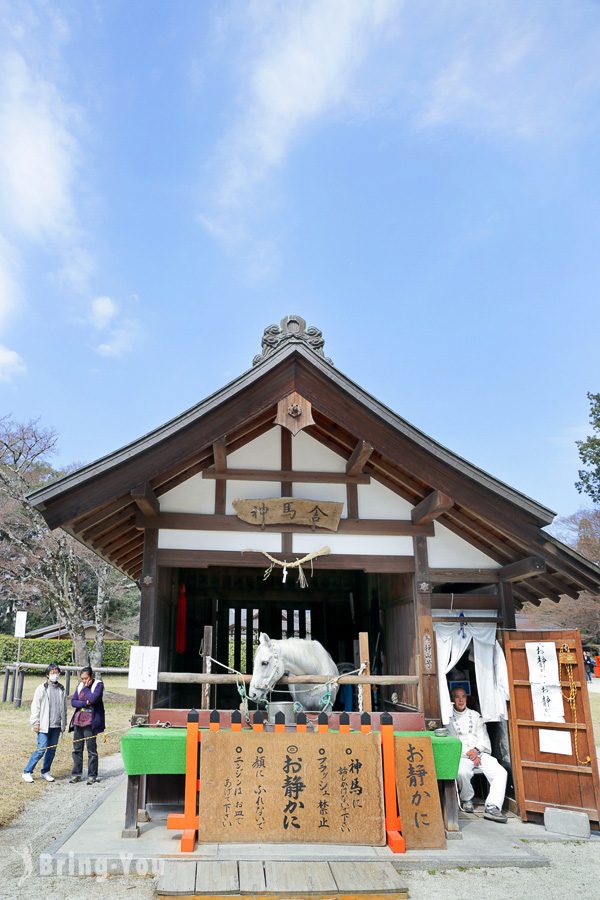
After passing through the second torii gate of Kamigamo Shrine, you enter the main hall area of the shrine. In front of the main hall is the “shinmeisha,” where horses offered to the shrine were once kept. Most shrines now only have horse sculptures in their shinmeisha, but when I visited on a Sunday with a handmade market, I was lucky enough to see a real horse. Every Sunday and national holiday from 9:30 to 15:00, the shrine brings in the horse named “Shinzan-go” (the white horse) to the shinmeisha.
The origin of ema is actually related to the horses enshrined in shrines: Learn about the purposes of omamori, omikuji, shu-in, animal fortune slips, and ema
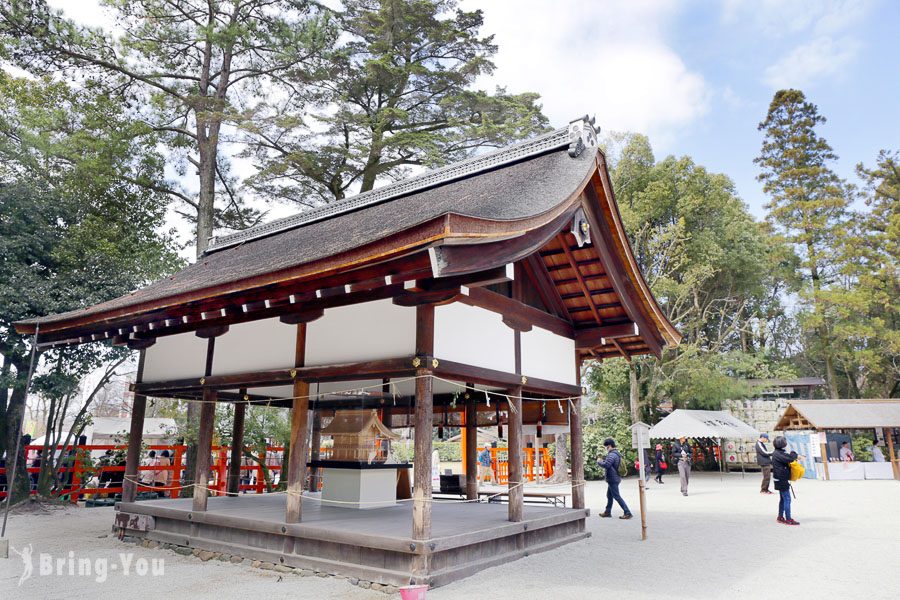
Hand-Washing Pavilion and Holy Mountain Spring Water
Before entering the shrine for worship, visitors can first purify their hands and mouth at the “temizuya” (water ablution pavilion) on the side. The “Kamiyama-yusui” spring water here comes from the mountain behind the shrine where the god Kamu-takae-rahi-no-mikoto (also known as Kamu-takae-rahi-no-ōkami) descended. The water quality is excellent and is known as one of the famous waters in Kyoto. The “sen” coffee served within the shrine is brewed using this water.
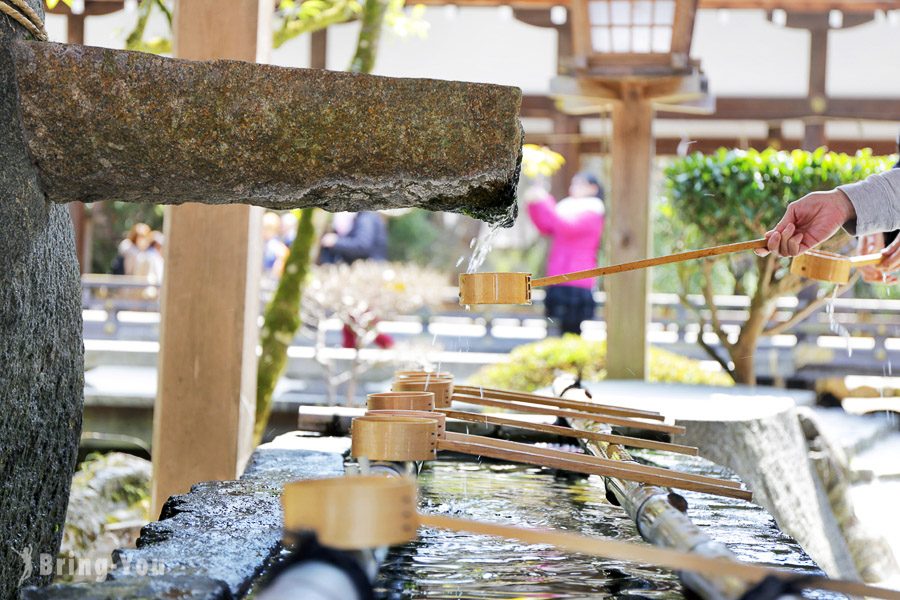
Tsuchiya
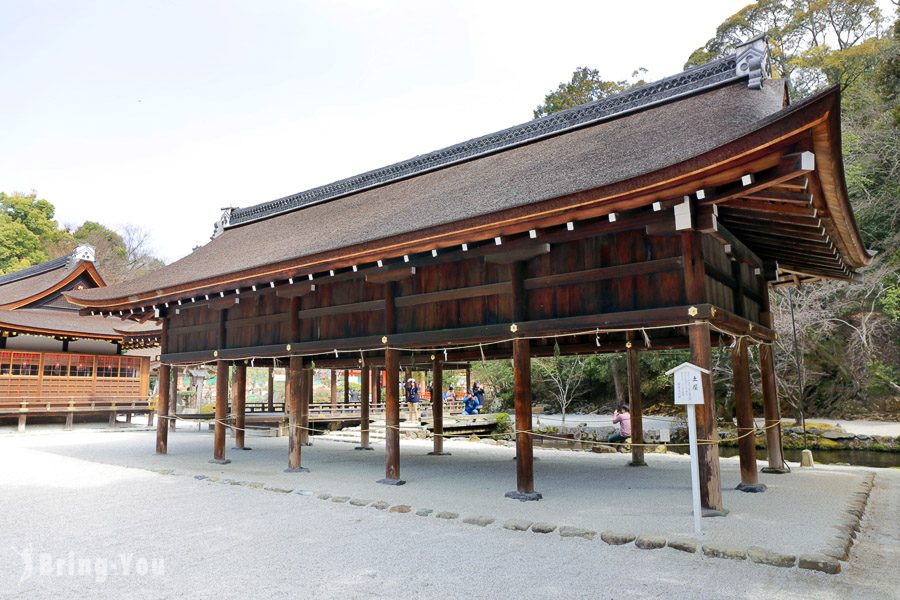
The earth house built in 1628 has now become an important designated cultural asset.
Li Sha
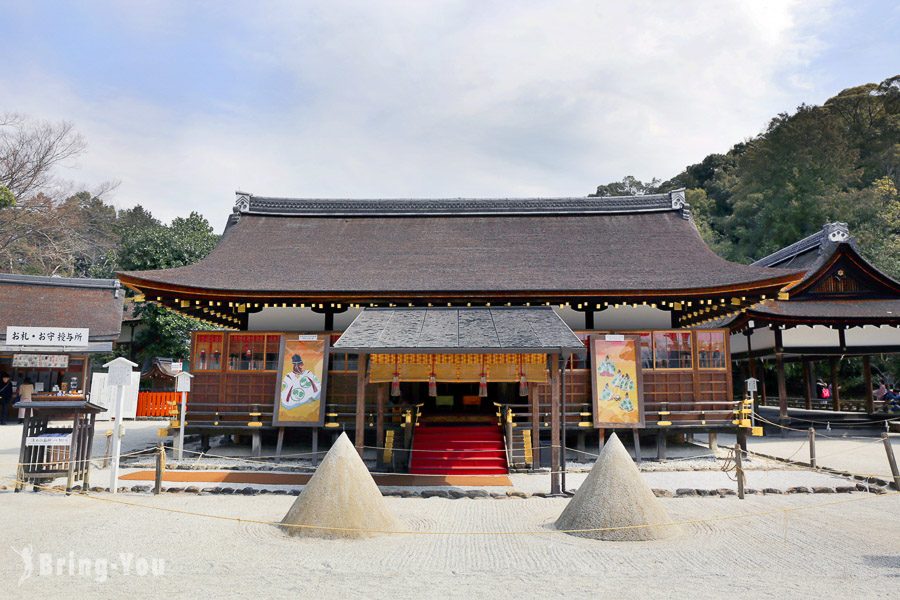
There are two mounds in front of the “Xidian” hall, and these two huge sand mounds symbolize the northern sacred mountains where the thunder god descends. The standing sand has the function of driving away impurities and purifying. Every year on September 9th, “Crow Sumo” will be held in front of the standing sand, allowing children to compete in sumo wrestling here.
Animal Oracle: Horse, Yatagarasu
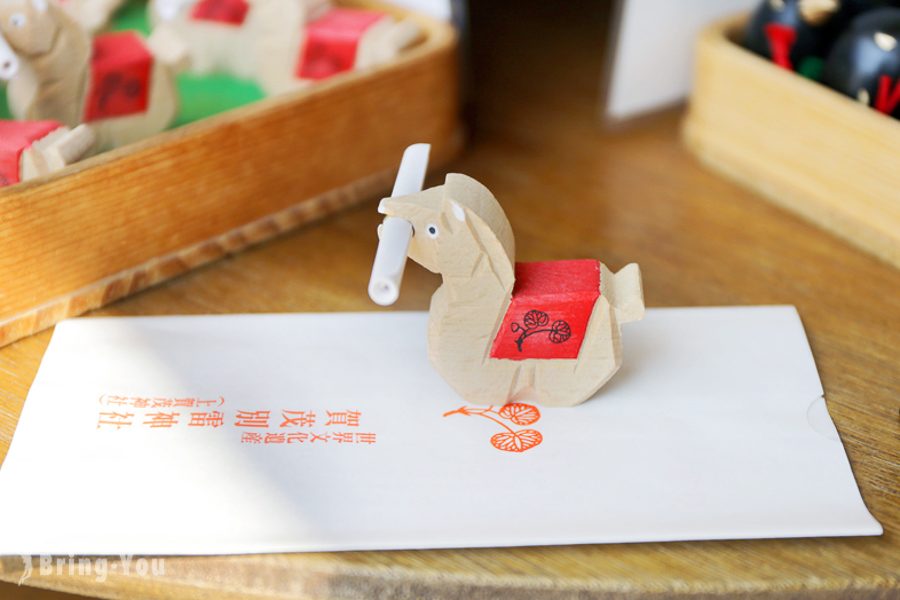
There are many famous amulets at Kamigamo Shrine, and today I want to share with you the animal-shaped omikuji. Kamigamo Shrine has a deep connection with horses since ancient times. Whenever the gods appear, they are decorated with aoi leaves and a horse racing ceremony is held. Among the animal omikuji at Kamigamo Shrine, there are wooden carved horses with aoi patterns on the seat.
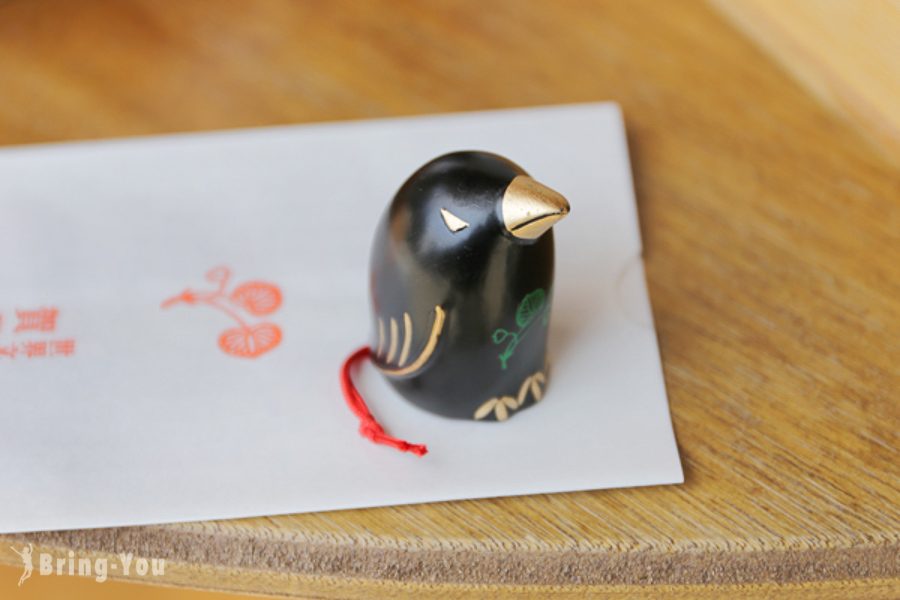
Legend has it that the founder of the Kamowakeikazuchi clan, Kamowakeikazuchi-no-Mikoto, guided a group of people safely into Nara in the form of a Yatagarasu (a three-legged crow) in ancient times. Therefore, at the Kamigamo Shrine, you can also see omikuji (fortunes) in the shape of Yatagarasu, symbolizing the ability to guide the drawer towards a better future.
May’s Sunflower Festival
The Aoi Matsuri is a festival held annually on May 15th (the Rooster day of the fourth month in the lunar calendar) in Kyoto, Japan. It is one of the three major festivals in Kyoto (Aoi Matsuri, Gion Matsuri, and Jidai Matsuri) and was originally called the Kamigamo Festival. Later, it was named after the decoration of the festival procession with hollyhock flowers and leaves.
The Kui Festival can be traced back to the end of the Kofun period, when it was a festival to worship the Kamo gods to calm the wind and rain and pray for a good harvest. Today, it has become a regular festival of the Kamigamo Shrine and the Shimogamo Shrine. The festival route starts from the Kyoto Imperial Palace, passes through the Kamigamo Shrine, and finally arrives at the Shimogamo Shrine.
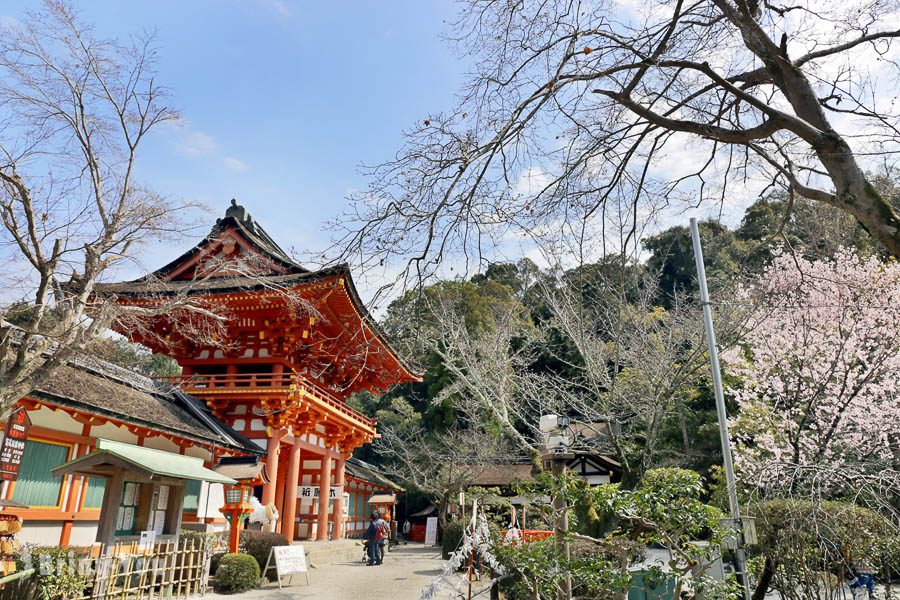
Mount Kataoka Shrine: A Shrine of Bonding
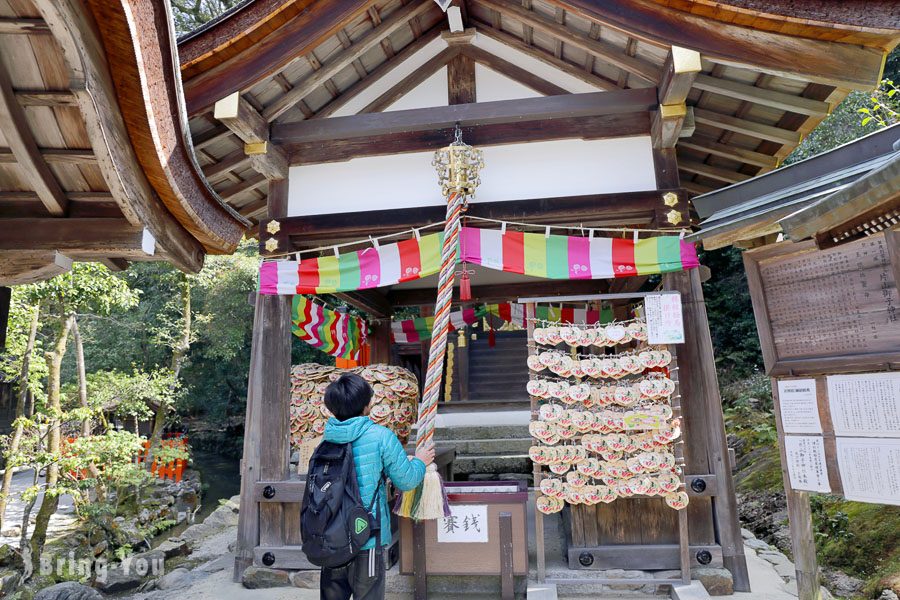
Inside the Kamigamo Shrine, there is a place that catches the attention of young men and women. It is the “Kataoka Shrine,” which is said to bring good relationships and successful pregnancies. The Kataoka Shrine (Katayama Mikoto Shrine) enshrines “Kamo Wakamiya Oki no Kami,” the mother of the enshrined deity of the Kamigamo Shrine, “Tamayori-hime no Mikoto.” It has been known as the god of relationships since ancient times, and the author of “The Tale of Genji,” Murasaki Shikibu, often visited to pray. Men and women who want to find good relationships and love write their wishes on heart-shaped ema (votive tablets) and offer them to the deity.
Shinto-style wedding ceremony
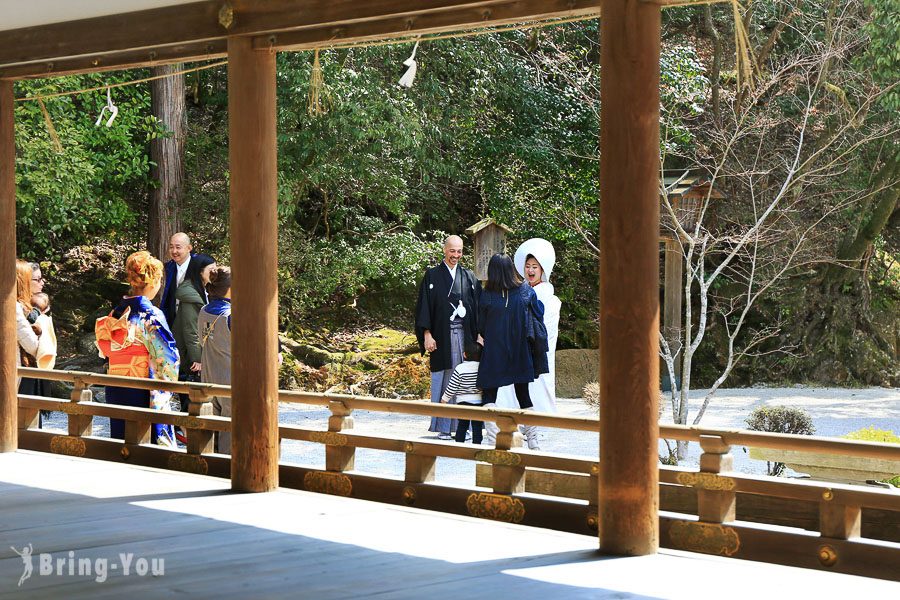
Shimogamo Shrine is also a popular shrine in Kyoto for holding Shinto-style weddings. Shinto-style weddings are weddings held at shrines or temples. Since the Meiji era, when the imperial family began to hold them, they have been imitated by the Japanese people. The bride wears a “shiro-muku” and the groom wears a “montsuki” for the ceremony and photos. On the day we visited, we saw many couples receiving blessings at Shimogamo Shrine!
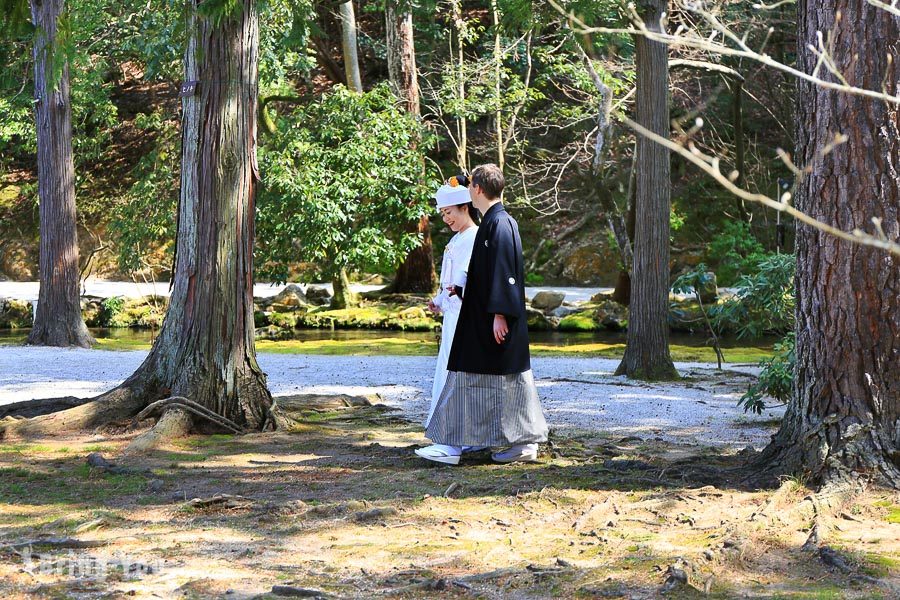
Photography Club “Shingu Shrine”
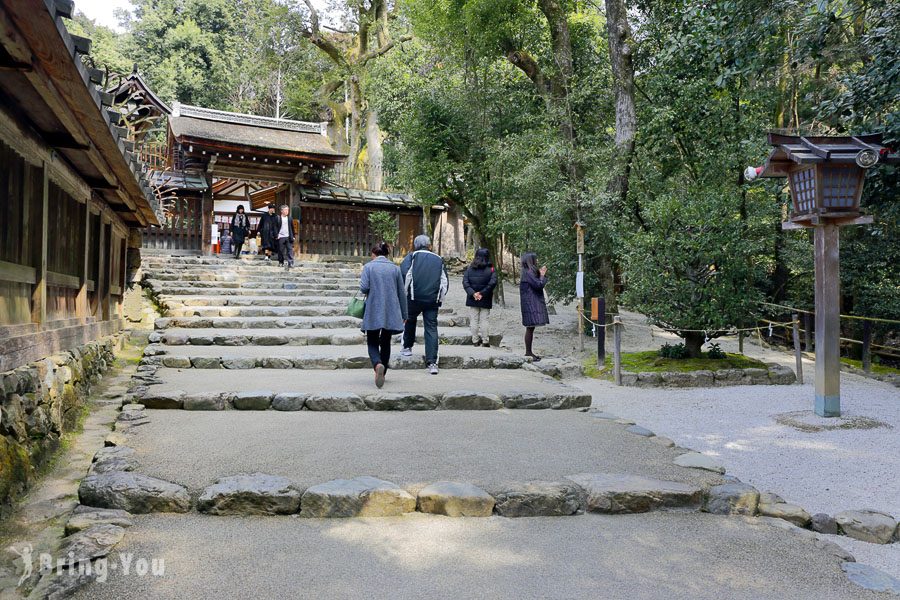
Going up the stairs will lead you to the Shingū Shrine and the Yamao Shrine.
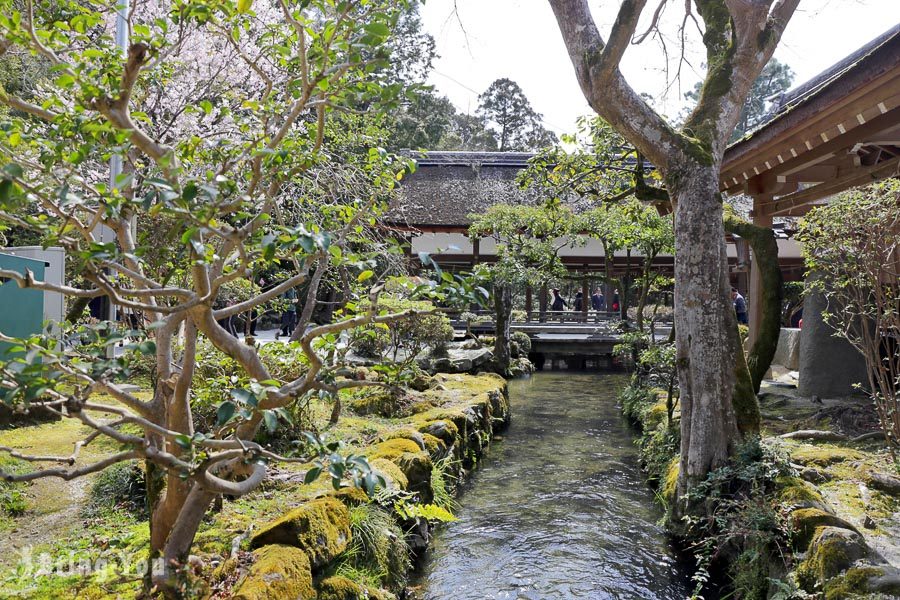
Shimogamo Shrine Handicraft Market
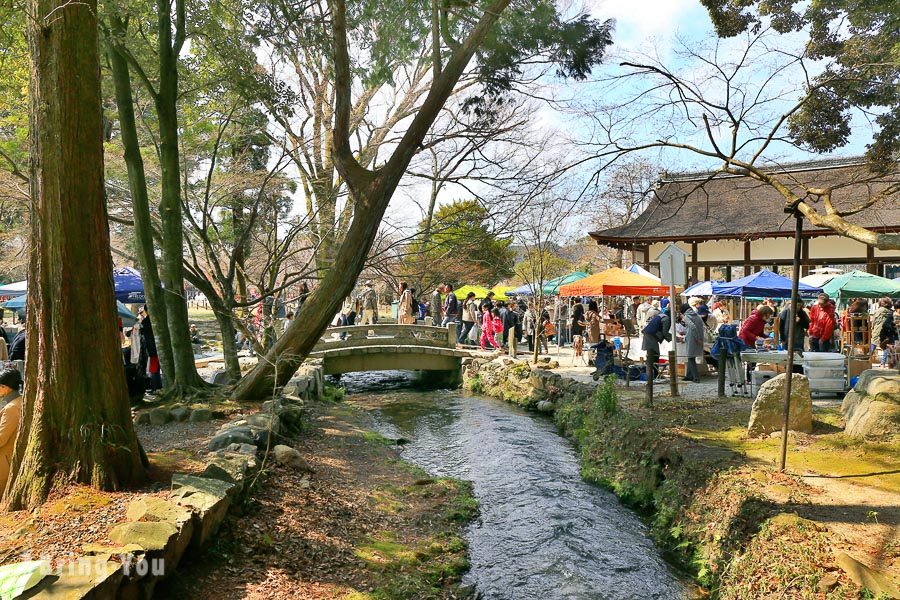
The handmade market at Kamigamo Shrine is held on the last Sunday of every month. A variety of handmade crafts, fresh produce from local farmers, designed furniture, and handmade leather goods are scattered on the right side of the shrine entrance. In addition to worshiping, visitors can also treasure hunt in this green forest handmade market.
